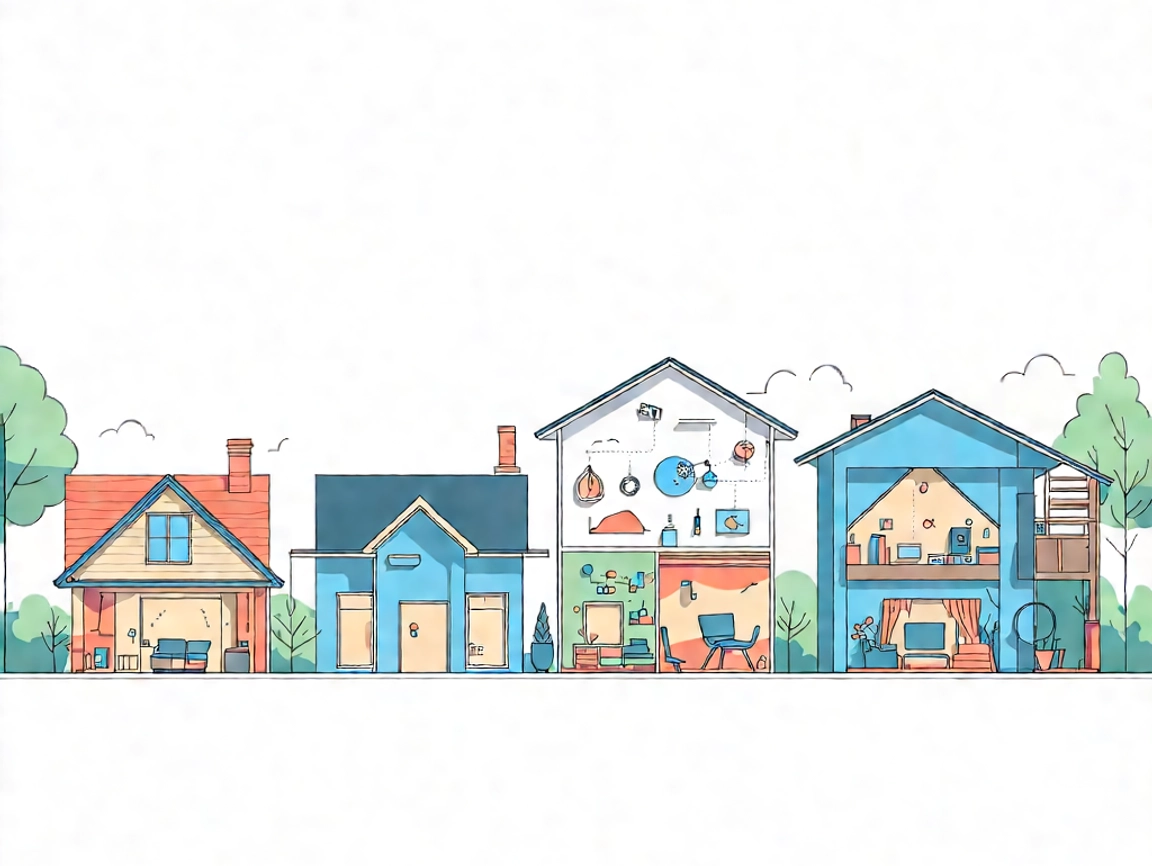
The concept of smart homes began with basic automation systems, such as programmable thermostats and simple lighting controls. These early systems allowed homeowners to set schedules and control devices remotely, providing a glimpse into the potential of home automation.
As technology advanced, with the introduction of Wi-Fi and Bluetooth, the integration of artificial intelligence that learns user preferences and habits, increasing convenience, efficiency
- 1939: Electric House of the Future.
The concept of a smart home dates back to 1939 when an article in Popular Mechanics Magazine envisioned an “electric house of the future.” This house featured automated doors, personalized greetings via an intercom system, and adaptive lighting based on residents’ needs.
- 1963: First Smart Industrial Buildings.
The first truly networked buildings emerged in the 1960s. These buildings implemented fault reporting systems through conventional electrical installations.
- 1973: Building with PLC Central Computer.
In 1973, the programmable logic controller (PLC) was introduced, allowing for centralized control of connected peripherals in smart homes.
- 1991: EIB – Independent Standard for Houses/Apartments.
The open EIB/KNX bus standard was established in 1991, enabling the integration of various home systems. By 2002, the KNX standard became binding and manufacturer-independent, allowing devices from different manufacturers to be networked.
- 2002: First Upscale and Luxury Homes with KNX.
In 2002, luxury homes began incorporating KNX technology, offering basic functions for controlling heating, ventilation, blinds, and lighting. The KNX software ETS2, running on Windows XP, was used for programming.
- 2005: House of the Present in Munich.
The House of the Present, built in 2005 for the Federal Garden Show in Munich-Riem, showcased advanced smart home features. It allowed for centralized control of all electronic processes via the KNX bus system.
- 2008: House V in the District of Munich.
House V, built in 2008, was almost self-sufficient in terms of energy and featured a central technology shaft for electrics, controls, heating, ventilation, and cooling. It also included automated windows and blinds for climate control.
- 2015: Smart Home with KNX for All Generations.
By 2015, over one million networked buildings existed, and Wi-Fi and Bluetooth enabled seamless communication between devices, allowing for more complex automation and control. Smart hubs and voice assistants, like Amazon Echo and Google Home, emerged as central control points, making it easier to manage multiple devices. With more than 7,000 products from over 400 companies available for smart home integration. Older houses could also be upgraded to smart homes.
- 2023: Over 2 Percent of Single-Family Homes in New Construction.
In 2023, the adoption of KNX technology in new single-family homes increased significantly due to lower component prices and greater acceptance among builders. KNX became the standard for manufacturer-independent and long-term planning in new buildings and renovations.
- 2025: High-End Smart Homes, AI Integration and Encrypted Radio Transmission.
By 2025, KNX had established itself as the bus system for high-end smart homes, with DALI systems for complete lighting control. AI-powered assistants can learn user preferences and habits, providing personalized experiences. For example, smart thermostats can adjust temperatures based on occupancy patterns, and smart lighting systems can create customized lighting scenes. Encrypted radio transmission became available for retrofitting older buildings, enhancing security, and preventing manipulation of transmitted information.
The future of smart homes looks promising, with continuous advancements in technology. Emerging trends include the integration of 5G for faster connectivity, using augmented reality (AR) for interactive home management, and the development of more sophisticated AI algorithms for enhanced automation.
